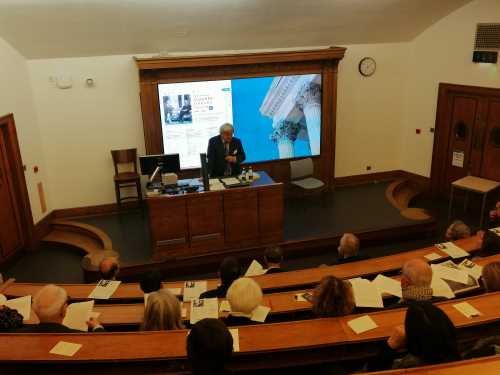Juan Luis Cebrián recalls Spanish Transition at Cervantes London

Spanish journalist and writer Juan Luis Cebrián reviewed the Spanish Transition and his role in the newspaper El País since its foundation in 1976. The interview is among the new series of the White-White Dialogues, in a conversation with the director of Instituto Cervantes London, Ignacio Peyró.
Current Honorary President of El País, the newspaper with the greatest dissemination and prestige in Spanish today. He is also part of the PRISA information, education and entertainment group, Cebrián (Madrid, 1944) and was executive chairman of the parent company until January 2018.During the interview, Peyró highlighted how “We are all witnesses of History, but only a few have the opportunity to decisively contribute towards shaping it” in reference to Cebrián. He is considered to have left a “greater footprint” on the last century of Spanish public life, in part due to how he co-founded Cuadernos para el Diálogo in the 60s.

Dazzled by Fleet Street
London has been important in his life. First, as a young man dazzled by the journalistic atmosphere that was breathing in the streets around Fleet Street and the eternal image of England, at that time complete with shillings. It was – in fact – here that he wrote one of his first journalistic scoops: an interview with Spanish politician Manuel Fraga, in which he is seen wearing a bowler hat across Hyde Park.
Cebrián also lived here during the entrance of the United Kingdom in what was then called the European Common Market. Back then, he spent almost a month writing reports and interviewing many people. By chance, he was also here on the night of the victory of the Brexit referendum, where, also by chance, he met Boris Johnson.

Impressed by Margaret Thatcher and Fidel Castro
“One of the privileges that I have had in my life for dedicating myself to journalism has been to meet many Heads of State. Some very interesting, such as Margaret Thatcher and Fidel Castro, who I always say are the two politicians who have personally impressed me the most, as they used to say the same in public that they said in private, a very rare thing in a politician,” added Cebrián.
El País is a newspaper which maintained a strong intellectual vocation from the beginning, with Rafael Conte, for example, as a literary critic, and intellectuals such as Jesús Aguirre or Francisco Ayala, who contributed to marking the intellectual fervour of the newspaper. Cebrián acknowledged that he had the privilege of being a great friend of the writer Gabriel García Márquez and took many trips with him. His friends also include Juan Goytisolo, whom he defined as one of the most unknown characters in Spanish culture, alongside writers like Carlos Fuentes and Mario Vargas Llosa.
Member of the Spanish Royal Language Academy since 1996 and member of the Conseil de Surveillance du Monde, Cebrián studied Philosophy at Complutense University in Madrid, where he graduated in Information Sciences, after graduating from the Official School of Journalism (1963).

Gabriele Finaldi, next guest of the Blanco-White Dialogues
The director of the National Gallery, Gabriele Finaldi, will be the next guest of the Blanco-White dialogues on March 18th. Prior to Cebrián, the dialogues at Instituto Cervantes London were attended by chef José Pizarro; writer Eduardo Mendoza; and dancer and director of the English National Ballet, Tamara Rojo.
The Blanco-White Dialogues bring great characters related to Spanish culture and relations between Britain and Spain to the British public. In a relaxed environment, prone to confidences, the guests have an in-depth conversation and are open to the public.

Juan Luis Cebrián rememora la Transición española en el Cervantes de Londres

El periodista y escritor español Juan Luis Cebrián repasó la Transición española y el papel del diario El País, desde su fundación en 1976, durante su participación en un encuentro de la nueva serie de Diálogos Blanco-White, en una conversación con el director del Instituto Cervantes de Londres, Ignacio Peyró.
Actual presidente de honor de El País, que hoy es el diario de mayor difusión y prestigio en español y que forma parte del grupo de información, educación y entretenimiento PRISA, Cebrián (Madrid, 1944) fue presidente ejecutivo de la compañía matriz hasta enero de 2018.
Peyró, destacó cómo “a todos nos toca ser testigos de la historia, pero solo unas pocas personas tienen la oportunidad de contribuir de modo decidido a modelarla” en referencia a Cebrián, uno de los hombres que considera que “mayor huella” ha dejado en el último siglo de vida pública española, desde que allá en los años 60 cofundara Cuadernos para el Diálogo.

Deslumbrado por Fleet Street
Londres ha sido uno de los lugares de su vida. Primero, como un joven deslumbrado por el ambiente periodístico que se respiraba en las calles alrededor de Fleet Street y la Inglaterra eterna que aún contaba en chelines. Fue aquí donde escribió uno de sus primeros bombazos periodísticos: una entrevista a Manuel Fraga, en la que se le ve con bombín cruzando Hyde Park.
Aquí vivió también Cebrián la entrada del Reino Unido en lo que era entonces el Mercado Común Europeo, ya que se pasó casi un mes haciendo reportajes y entrevistando a mucha gente. Por pura casualidad también pasó aquí la noche de la victoria del referéndum del Brexit, donde, también de casualidad, se encontró con Boris Johnson.

Impresionado por Margaret Thatcher y Fidel Castro
“Uno de los privilegios que he tenido en la vida por dedicarme al periodismo ha sido conocer a muchos Jefes de Estado, algunos muy interesantes como Margaret Thatcher y Fidel Castro, que siempre digo que son los dos políticos más me han impresionado personalmente, diciendo lo mismo en público que decían en privado, cosa muy rara en un político”, exclamó Cebrián.
Con El País se quiso un diario con fuerte vocación intelectual desde el principio, con Rafael Conte, por ejemplo, como crítico literario, y personajes como Jesús Aguirre o Francisco Ayala, que contribuyeron a marcar la temperatura intelectual del periódico. Reconoció que tuvo el privilegio de ser gran amigo de Gabriel García Márquez y de hacer muchos viajes con él; muy amigo de Juan Goytisolo, al que definió como uno de los personajes más desconocidos de la cultura española; y muy amigo de escritores como Carlos Fuentes y Mario Vargas Llosa.
Académico de la Lengua desde 1996 y miembro del Conseil de Surveillance de Le Monde, Cebrián estudió Filosofía en la Universidad Complutense de Madrid, donde se licenció en Ciencias de la Información, tras graduarse en la Escuela Oficial de Periodismo (1963).

Gabriele Finaldi, próximo invitado de los Diálogos Blanco-White
El director de la National Gallery, Gabriele Finaldi, será el próximo invitado de los diálogos Blanco-White el 18 de marzo. Anteriormente a Cebrián, los diálogos en el Instituto Cervantes de Londres contaron con la presencia del chef José Pizarro; el escritor Eduardo Mendoza; y la bailarina y directora del English National Ballet, Tamara Rojo.
Los Diálogos Blanco-White acercan al público británico a grandes personajes relacionados con la cultura española y las relaciones entre Gran Bretaña y España. En un ambiente distendido y relajado, propenso a las confidencias, los invitados mantienen una conversación en profundidad y abierta al público.

British Hispanist and Golden Age Literature Scholar Trevor J. Dadson dies
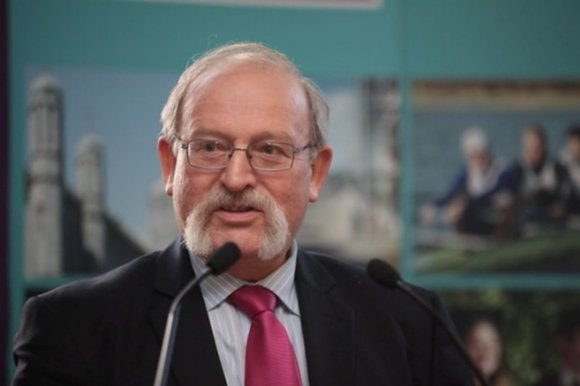
Hispanist and historian, Trevor John Dadson passed away on January 28th, 2020. A corresponding academic at the Royal Spanish Academy (RAE) with a doctorate from the University of Cambridge, Dadson studied the work of the great poets of Spanish Golden Age: Lupercio Leonardo, Bartolomé Leonardo de Argensola, the Count of Salinas and Gabriel Bocángel.
“Trevor Dadson has been an immensely prestigious Hispanist, a scholar like those who no longer exist; a teacher with a multitude of disciples and a great university manager and promoter of Hispanism and its visibility in the United Kingdom and Ireland. His death is a huge loss because he continued with an impressive intellectual activity. He has been one of the great connoisseurs of our poetry – baroque and contemporary – and frontline characters of our Golden Age,” said the director of the Instituto Cervantes London, Ignacio Peyró.
In addition, Peyró highlighted his study of the Moors in Villarrubia de los Ojos as “a pioneering and model book in cultural studies. His mark is immense, and recently he was lucky to see how many of his disciples gathered articles on Spanish poetry for a tribute book. Dadson was also, and above all, a lover of Spain: its languages, its literature, its culture and its people.”
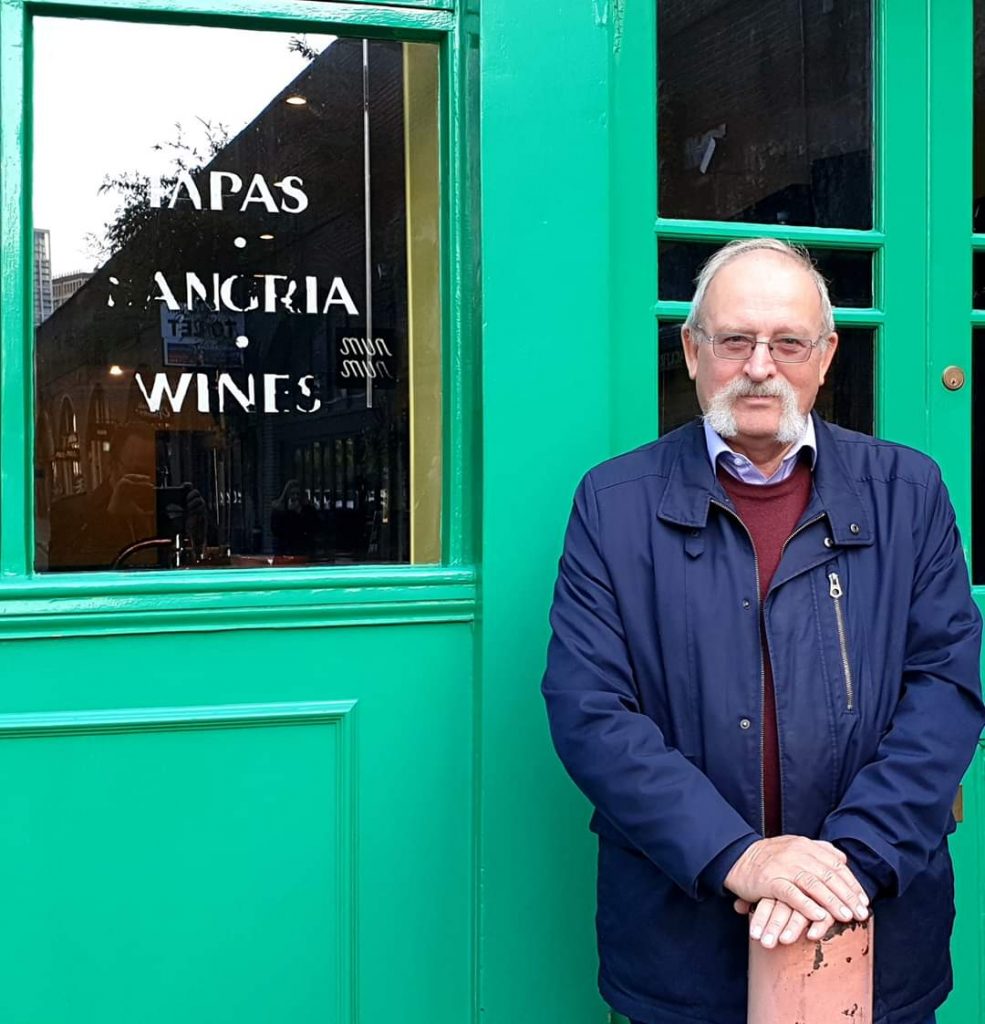
Dadson had a degree in Hispanic Philology from the University of Leeds and a PhD from the University of Cambridge. He was editor in chief of Hispanic Research Journal and Emeritus Professor of Hispanic Studies at Queen Mary College at the University of London.
Born on October 7, 1947, Dadson became part of the British Academy in 2008 and was a professor at the universities of Belfast, UNED and Castilla-La Mancha. In 2015, he was granted the Commendation of the Order of Isabel la Católica by King Felipe VI, for his services to Spanish culture.
That same year, Dadson was interviewed by former director of the Instituto Cervantes in London, Julio Crespo MacLennan, at the headquarters of the Institute in the British capital, as part of the Conversations with Great British Hispanists.
In 2017, Dadson participated in the Tribune of Hispanism, launched by Instituto Cervantes in Madrid, a new forum of meetings in which prominent Hispanism took part, such as the British historian Sir John H. Elliott and the Marquis of Tamarón.
Fallece el hispanista Trevor J. Dadson, gran estudioso del Siglo de Oro

El hispanista e historiador británico Trevor John Dadson falleció la madrugada del 28 de enero de 2020. Académico correspondiente de la RAE y doctorado por la Universidad de Cambridge, Dadson estudió la obra de los grandes poetas del Siglo de Oro: Lupercio Leonardo y Bartolomé Leonardo de Argensola, el Conde de Salinas y Gabriel Bocángel.
«Trevor Dadson ha sido un hispanista de inmenso prestigio, un erudito como los que ya no hay, un maestro con multitud de discípulos y un gran gestor universitario e impulsor del hispanismo y su visibilidad en Reino Unido e Irlanda. Su muerte es una pérdida enorme porque seguía con una actividad intelectual impresionante. Ha sido uno de los grandes conocedores de nuestra poesía -barroca o contemporánea- y de personajes de primera línea de nuestro Siglo de Oro», señaló el director del Instituto Cervantes de Londres, Ignacio Peyró.
Además, Peyró destacó de su estudio sobre los moriscos en Villarrubia de los Ojos como «un libro pionero y modélico en los estudios culturales. Su huella es inmensa, y hace poco tuvo la suerte de ver cómo muchos de sus discípulos reunían artículos sobre poesía española para un libro homenaje. Dadson era también, y ante todo, un enamorado de España, de sus lenguas, su literatura, su cultura y sus gentes».

Dadson era licenciado en Filología Hispánica por la Universidad de Leeds y se doctoró en la Universidad de Cambridge. Fue editor en jefe del Hispanic Research Journal y Catedrático de Estudios Hispánicos en el Queen Mary College de la Universidad de Londres.
Nacido el 7 de octubre de 1947, Dadson formaba parte de la British Academy desde 2008 y fue profesor en las Universidades de Belfast, UNED y Castilla-La Mancha. En 2015 le fue concedida la Encomienda de la Orden de Isabel la Católica por el rey Felipe VI, por sus servicios a la cultura española.
Ese mismo año, Dadson, fue entrevistado por el director del Instituto Cervantes de Londres en aquel entonces, Julio Crespo MacLennan, en la sede del Instituto en la capital británica, dentro del Ciclo de Grandes Hispanistas Británicos.
En 2017 Dadson participó en la Tribuna del Hispanismo, puesta en marcha por el Instituto Cervantes en Madrid, un nuevo foro de encuentros en el que participaron destacados estudiosos de la cultura hispánica, como el historiador británico sir John H. Elliott y el Marqués de Tamarón.
Jose Pizarro: «It is an illusion that people already understand our product»

«All the great Spanish chefs are coming to this country and it is an illusion that people already understand our product, that they understand what is ham, Pimentón, our oils, our vinegars and all the variety of our gastronomic culture,» explained Spanish chef José Pizarro during his participation in a series of talks called the Blanco- White Dialogues, in a conversation with the director of the Cervantes Institute in London, Ignacio Peyró.
Director of Instituto Cervantes in London highlighted how “gastronomy is one of the best tools of cultural diplomacy and that we must support the talent of our creators and entrepreneurs of the great larder that is Spain.»
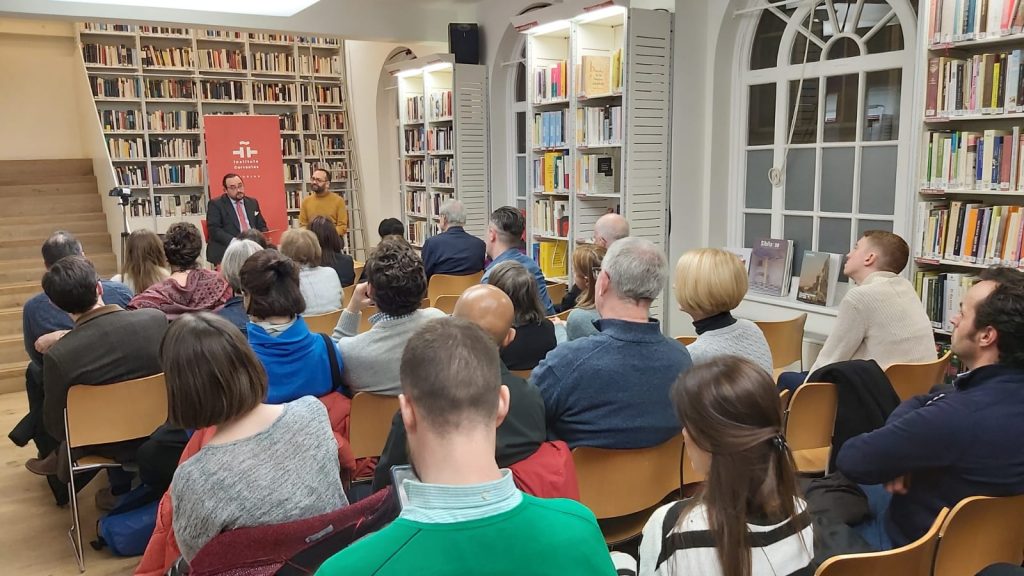
A very nice and very hard journey
The chef from Extremadura considers himself a very positive person and believes that, in the UK, he is in «a country of diversity and made by us foreigners, although I do not consider myself that way. I consider myself a part of this culture.»
The chef said that what he enjoys the most about London is its «diversity». He remembers falling in love with the British Capital city on his first landing at Gatwick Airport. «It has been a very nice period of my life since I came here; this country from the beginning, it has agreed very well with me, it has given me many opportunities, it has received me very well and opened all the doors.»
Pizarro arrived with only a little English and did not know what he was going to find. Little by little, «fighting, working and enjoying, and with the 100% Iberian ham as a flag,» he made his own space. He defined it as «a very nice and very hard journey too» – full of enjoyment and completely without regret.
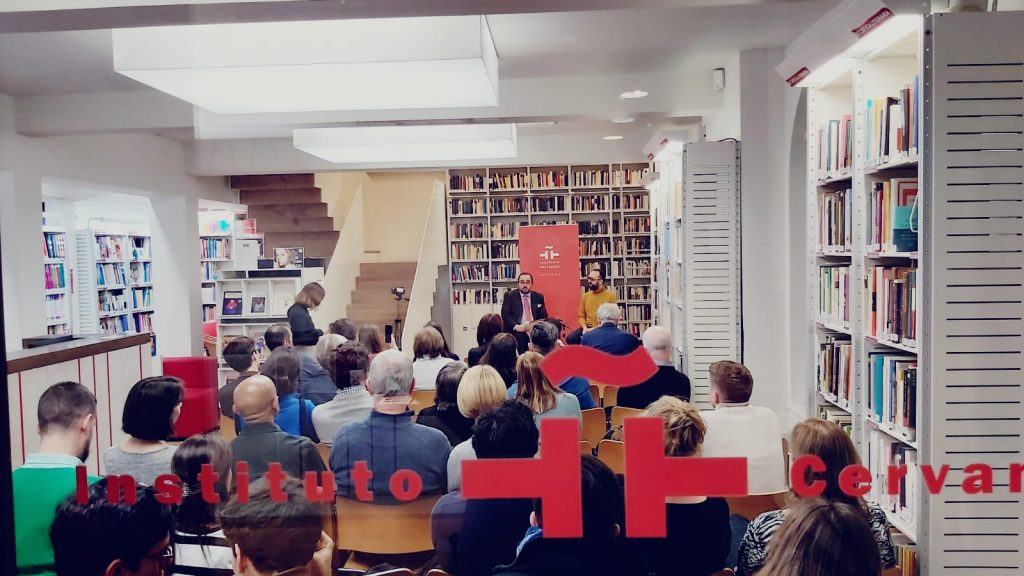
Over his last 20 years in the British capital, Pizarro has tried to rectify the lack of knowledge the UK has about Spanish gastronomic culture. He discovered it was never in the press, and it was not known or talked much about. Many locals confused Spanish products with other countries, for example: Iberian ham was thought to be Italian prosciutto. Pizarro now happily acknowledges that things have «changed a lot», and quoted that now you can find Pimentón de la Vera in any corner of the city.
In the same way, he said that the interest in the Spanish language has risen greatly and the importance of chefs like Arzak and Adriá who both have an impressive projection and creativity.

On his Invitation to the Blanco-White Dialogues
«It is an honor. It is very emotional here, and it’s wonderful for me to be here today at Instituto Cervantes London and to be able to share a little of my life and my journey in my language,» said Pizarro. The Blanco-White Dialogues bring great guests related to Spanish culture and relations between Britain and Spain to the British public.
The next one will be the Spanish journalist and writer Juan Luis Cebrián, in a talk that will take place on Monday, February 3 at 7:00 p.m. Previously, the dancer and director of the English National Ballet, Tamara Rojo, and the writer and Cervantes Prize in 2017 Eduardo Mendoza participated.
José Pizarro: «Es una ilusión que la gente ya entienda nuestro producto»

“Todos los grandes chefs españoles están viniendo a este país y es una ilusión que la gente ya entienda nuestro producto, que entienda lo que es el jamón, el pimentón, nuestros aceites, nuestros vinagres y toda la variedad de nuestra cultura gastronómica”, explicó hoy el chef español José Pizarro durante su participación en un encuentro de la nueva serie de Diálogos Blanco-White, en una conversación con el director del Instituto Cervantes de Londres, Ignacio Peyró.
El director del Instituto Cervantes de Londres destacó como “la cocina es una de las mejores herramientas de la diplomacia cultural y estamos muy contentos de apoyar el talento de nuestros creadores y emprendedores de esa gran dispensa que es España.

Un recorrido muy bonito y muy duro
El chef extremeño se considera una persona muy positiva y cree que está en “un país de diversidad y hecho por nosotros, que somos los extranjeros, aunque yo no me considero así, me considero una parte de esta cultura”.
El extremeño recalcó que lo que más me disfruta de Londres es “la diversidad” y se acuerda de su primer aterrizaje en el aeropuerto de Gatwick, un primer momento desde el que le gustó la capital británica. “Ha sido un recorrido muy bonito desde que llegué a aquí, este país desde el principio, se ha portado muy bien conmigo, me ha dado muchas oportunidades, me ha recibido muy bien y me abierto todas las puertas”.
Pizarro llegó prácticamente sin hablar nada de inglés y no sabía lo que se iba a encontrar, pero poco a poco, “luchando, trabajando y disfrutando, y con el jamón ibérico 100% como bandera”, se ha hecho un hueco. Lo definió como “un recorrido muy bonito y muy duro también”, en el que ha disfrutado mucho y en el que no se arrepiente de nada de lo que ha hecho.

Tras pasar estos últimos 20 años en la capital británica, Pizarro apuntó a como antes no había mucho en prensa sobre la cultura gastronómica española y no se conocía ni se hablaba mucho de ella. Muchos locales confundían el producto español con el de otros países, por ejemplo el jamón ibérico, que se pensaban que era prosciutto italiano, pero el chef reconoce que las cosas “han cambiado mucho”, y sin ir más lejos, citó como ahora se puede encontrar el Pimentón de la Vera en cualquier rincón de la ciudad.
En esa línea, precisó que el interés por el idioma español ha subido muchísimo y la importancia de chefs como Arzak y Adriá, con una proyección y una creatividad impresionantes.

Invitado a los Diálogos Blanco-White
“Es un honor, es muy emotivo y muy bonito para mí estar hoy en el Instituto Cervantes de Londres y poder compartir un poco de mi vida y mi recorrido en mi lengua”, destacó Pizarro. Los Diálogos Blanco-White acercan al público británico a grandes personajes relacionados con la cultura española y las relaciones entre Gran Bretaña y España.
El próximo invitado de los Diálogos Blanco-White será el periodista y escritor español Juan Luis Cebrián, en un encuentro que tendrá lugar el lunes 3 de febrero a las 19:00 horas. Previamente participaron la bailarina y directora del English National Ballet, Tamara Rojo, y el escritor y Premio Cervantes en 2017 Eduardo Mendoza.
Jiménez Fraud returns to London, Oxford and Cambridge with the publication of Epistolary
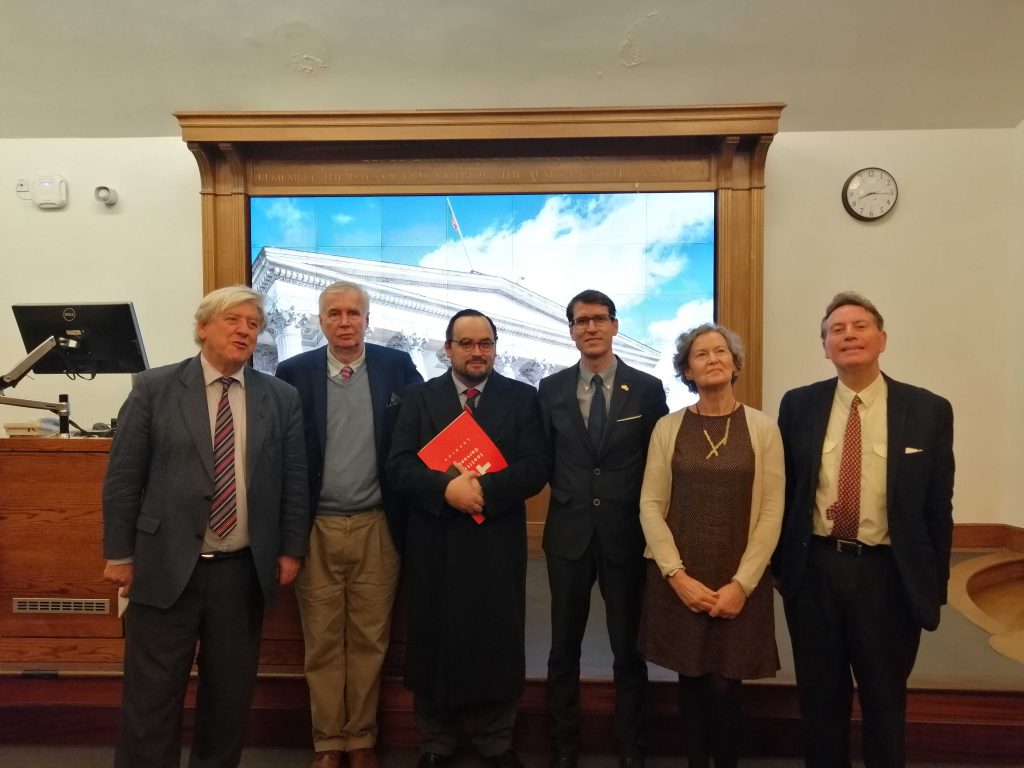
The United Kingdom hosted the presentation of the Epistolary (1905-1964) of Alberto Jiménez Fraud over three days of events in London, Oxford and Cambridge. The events were organised by Magdalen College alongside la Residencia de Estudiantes and the Free Institution of Education in collaboration with the Ministry of Education of the Embassy of Spain in the United Kingdom. Instituto Cervantes in London also collaborated as part of the ongoing celebrations for the 80th anniversary of the Spanish Republican exile.
Jiménez Fraud directed the Residencia de Estudiantes from its foundation in 1910 until 1936 when it became, according to Julio Caro Baroja, the first cultural centre in Spain. Throughout those decades Fraud mentored several generations of university students including, Severo Ochoa, Dalí, García Lorca or Buñuel, among many other exceptional residents. They presented theories at the Residencia, talking and working with some of the most outstanding International intellectuals, scientists and creators of the moment: Albert Einstein, Marie Curie, Walter Gropius, Paul Valéry, Alexander Calder.
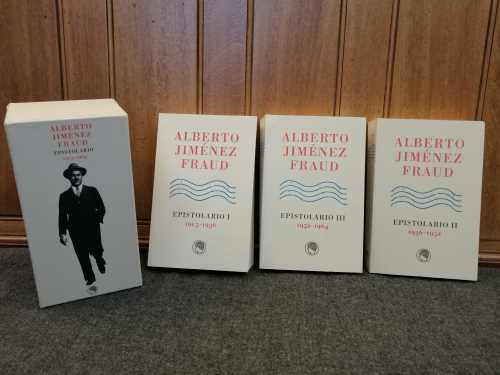
Exile in England
The outbreak of the Spanish Civil War forced the Residencia to stop its activity and forced Jiménez Fraud into exile with his family. They fled to England where he worked as a Lecturer in the Sub-Faculty of Spanish at the University of Oxford.
The Epistolary is a collection of over two thousand letters, offering an insight and new data into the modernisation of Spanish society and its recovery process in post-war Spain. The letters present an overview of the culture of the twentieth century through their multiple correspondents and dialogues.
The protagonists of Spanish and European intellectual history parade through its pages as close family and friends of Jiménez Fraud such as his teacher Giner de los Ríos. The list is long and impressive, including letters from: Manuel B. Cossío, José Moreno Villa, Zenobia Camprubí, Juan Ramón Jiménez, Natalia Cossío or Gloria Giner, along with Ortega and Gasset, Unamuno, Falla, Ramón y Cajal, Menéndez Pidal, María de Maeztu and Américo Castro.
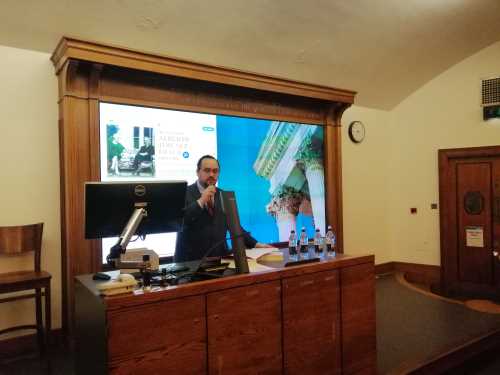
“The collection of letters gathered in the Jiménez Fraud Epistolary is an impressive academic work that deserves all forms of praise for both publishers and publishing houses, since it is an outstanding contribution to Spanish intellectual and cultural history during the twentieth century, and it is also a very interesting book from the point of view of Spanish-British relations,” said the director of Instituto Cervantes in London, Ignacio Peyró.
Elisa Navas, director of the Francisco Giner de los Ríos Foundation, stressed the importance of the three volumes of the Alberto Jiménez Fraud Epistolary, for the abundant information hitherto unknown about the modernisation project born from the Free Institution of Education of which the Residencia was an emblem.
Jiménez Fraud’s letters, which fluctuate between public and private, are included in the collection of epistolary published by the Residencia, in an attempt to achieve the most complete body of correspondence of the most relevant figures of the so-called Age of Silver of the Spanish culture: the period from 1868 to 1936, the brightest period after the Golden Age.
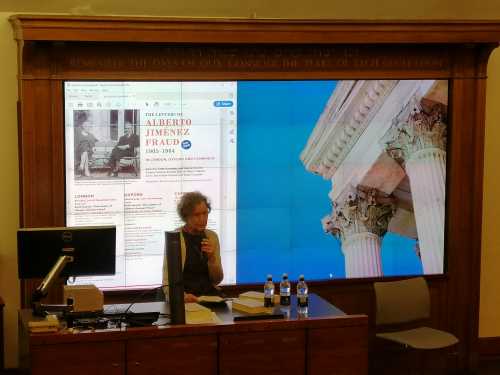
For Navas, the epistolary meets the rescue objective that encouraged the life and work of Jiménez Fraud when he had to leave the Residencia in September 1936, considering it essential to recover the memory of the institutions and the transmission of his legacy to the new generations of Spaniards, with the dream that one day they could reap their fruit in a free and democratic Spain.
García-Velasco and Valender
For José García-Velasco, the Higher Council for Scientific Research has always been linked to the Residencia. He explained how Jiménez Fraud’s struggle to recover the Residencia project until his death in 1964 informed the entirety of his exile in England. His legacy is still alive in the current Residencia de Estudiantes and the Free Institution of Education, both restored the Spanish democratic and European generations.
García-Velasco also stressed the value and importance of the precious testimonies in the epistolary of Jiménez Fraud. The first volume includes letters written during the period prior to the Spanish Civil War, and the following volumes, with correspondence between Jiménez Fraud and its recipients reflecting on the events that occurred between 1910 and 1636 since his exile.
In addition, García-Velasco mentioned the scholarship programme created by the Board for the Expansion of Studies, between 1907 and 1936, which granted about 3,000 scholarships (then called pensions) to centres of excellence in Europe and the United States. Thanks to these networks, the Residencia served as host to prestigious figures of the contemporary academic, scientific and artistic fields.
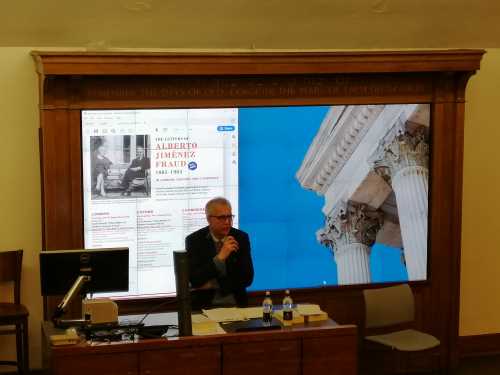
For his part, the Spanish literature professor at El Colegio de México and respected hispanist, James Valender, highlighted the value of the individual as well as the community angles represented by Jiménez Fraud in his letters. “Don Alberto (as his colleagues call him), is undoubtedly one of the figures who did more to promote Spanish culture and education in the first half of the twentieth century and was also a man who fled from fame and public recognition with the same determination with which others, with much less merit than him,” said Valender.
Jiménez Fraud vuelve con su Epistolario a Londres, Oxford y Cambridge

Reino Unido acogió la presentación del Epistolario (1905-1964) de Alberto Jiménez Fraud, en tres días de eventos en Londres, Oxford y Cambridge organizados por el Magdalen College, la Residencia de Estudiantes y la Institución Libre de Enseñanza en colaboración con la Consejería de Educación de la Embajada de España en el Reino Unido y el Instituto Cervantes de Londres, en el marco del 80 aniversario del exilio republicano español.
Jiménez Fraud dirigió la Residencia de Estudiantes desde su fundación en 1910 hasta 1936, cuando se había convertido, según Julio Caro Baroja, en el primer centro cultural de España. A lo largo de esos decenios, en los que fue mentor de varias generaciones de universitarios (Severo Ochoa, Dalí, García Lorca o Buñuel, entre otros muchos residentes excepcionales), en la Residencia expusieron sus teorías o presentaron sus obras algunos de los más destacados intelectuales, científicos y creadores internacionales del momento: Albert Einstein, Marie Curie, Walter Gropius, Paul Valéry, Alexander Calder…

Exilio en Inglaterra
El estallido de la guerra civil obligó a la Residencia a detener su actividad y a Jiménez Fraud a exiliarse con su familia en Inglaterra, donde trabajó como Lecturer en la Sub-Faculty of Spanish de la Universidad de Oxford.
Este epistolario, que recoge dos mil cartas, ofrece nuevos datos acerca del plan de modernización de la sociedad española y sobre su proceso de recuperación en la España posterior a la guerra. Las cartas presentan un panorama de la cultura del siglo XX a través de sus corresponsales.
Por sus páginas desfilan algunos de los protagonistas de la historia intelectual española y europea: familiares y amigos de Jiménez Fraud como su maestro Giner de los Ríos, Manuel B. Cossío, José Moreno Villa, Zenobia Camprubí, Juan Ramón Jiménez, Natalia Cossío o Gloria Giner, junto a Ortega y Gasset, Unamuno, Falla, Ramón y Cajal, Menéndez Pidal, María de Maeztu, Américo Castro… o los más jóvenes Caro Baroja o Valente.

“La colección de cartas reunidas en el Epistolario de Jiménez Fraud es una impresionante obra académica que merece toda forma de elogio tanto para los editores como para la editorial, ya que es una contribución destacada a la historia intelectual y cultural española durante el siglo XX, y también es un libro muy interesante desde el punto de vista de las relaciones hispano-británicas”, destacó el director del Instituto Cervantes de Londres, Ignacio Peyró.
Elisa Navas, directora de la Fundación Francisco Giner de los Ríos, subrayó la importancia de los tres volúmenes del epistolario de Alberto Jiménez Fraud, por la abundante información hasta ahora desconocida sobre el proyecto de modernización nacido de la Institución Libre de Enseñanza del que la Residencia fue emblema.
Las cartas de Jiménez Fraud, que fluctúan entre lo público y lo privado, se engloban dentro de la colección de epistolarios que publica la Residencia, en un intento por conseguir el corpus más completo de la correspondencia de las figuras más relevantes de la llamada Edad de Plata de la cultura española: el período de 1868 a 1936, el período más brillante después del Siglo de Oro.

Para Navas, el epistolario cumple con el objetivo de rescate que animó la vida y la obra de Jiménez Fraud cuando tuvo que abandonar la Residencia en septiembre de 1936, considerando imprescindible recuperar la memoria de las instituciones y la transmisión de su legado a las nuevas generaciones de españoles, con el sueño de que un día podrían recoger su fruto en una España libre y democrática.
García-Velasco y Valender
En el caso de José García-Velasco, del Consejo Superior de Investigaciones Científicas y siempre ligado a la Residencia, explicó la lucha de Jiménez Fraud desde el exilio para recuperar el proyecto de la Residencia hasta su muerte en 1964 y cómo su legado sigue vivo en la actual Residencia de Estudiantes y en la Institución Libre de Enseñanza, ambas restauradas para las generaciones democráticas y europeas españolas.
García-Velasco subrayó la importancia de los testimonios de precioso valor en el epistolario de Jiménez Fraud, con un primer volumen con cartas escritas durante el período previo a la Guerra Civil española, y los siguientes volúmenes, con la correspondencia entre Jiménez Fraud y sus destinatarios reflejando en los eventos ocurridos entre 1910 y 1636 desde el exilio.
Además, García-Velasco mencionó el programa de becas creado por la Junta para la Ampliación de Estudios, entre 1907 y 1936, que concedió unas 3.000 becas, llamadas en aquel entonces pensiones, a centros de excelencia en Europa y Estados Unidos. Gracias a estas redes, la Residencia sirvió de anfitriona a figuras prestigiosas del campo académico, científico y artístico del momento.

Por su parte, el profesor de Literatura española de El Colegio de México y respetado hispanista, James Valender, resaltó los aspectos individuales y colectivos que Jiménez Fraud contó en sus cartas. “Don Alberto (como lo llaman sus colegas), es sin duda alguna uno de las figuras que hizo más por promocionar la cultura española y la educación en la primera mitad del siglo XX y además, fue un hombre que huyó de la fama y del reconocimiento público con la misma determinación con la que otros, con muchos menos méritos de los que presumir, fueron constantemente el centro de atención”, destacó Valender.
Belen Cao, the Spanish designer at the National Gallery’s exhibitions
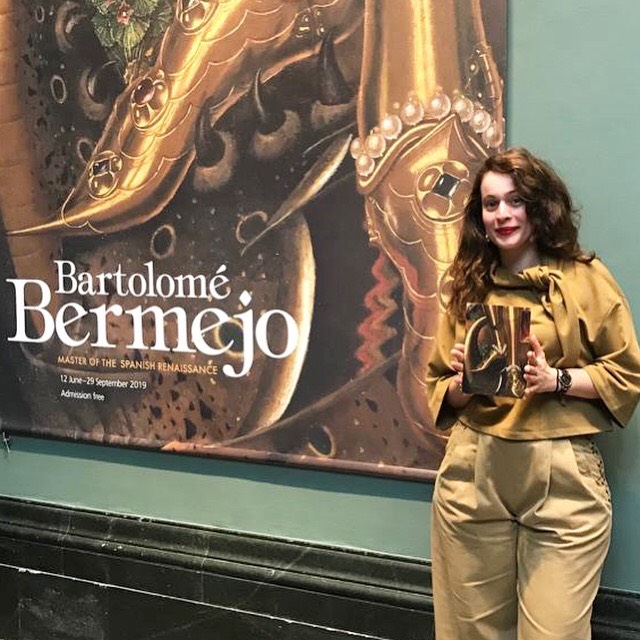
Belen Cao has always been fascinated by both writing and drawing and studied a degree in Journalism and Audiovisual Communication from the Antonio de Nebrija University in Madrid (2009). Since then, she has worked in small press offices and, in doing so, she began to redirect her career towards Graphic Design.
In 2012, Cao completed a one-year professional Masters in this subject at the Trazos school in Madrid. Followed by a year in Digital Illustration at the ESDIP school in Madrid (2014) and finally, a Master of the Arts at Kingston University, London in Graphic Design and Visual Communication in which she graduated with honors in 2016. Her academic studies have also been informed by extracurricular learning such as courses in animation, drawing, typography and printing methods.
Cao began her career at London’s National Gallery in December 2016 after a brief period of volunteering as an art teacher at an elementary school in South East London. She combined the volunteering with freelance designer work for Associated Studios, a training school for Young students of Theater and Opera.
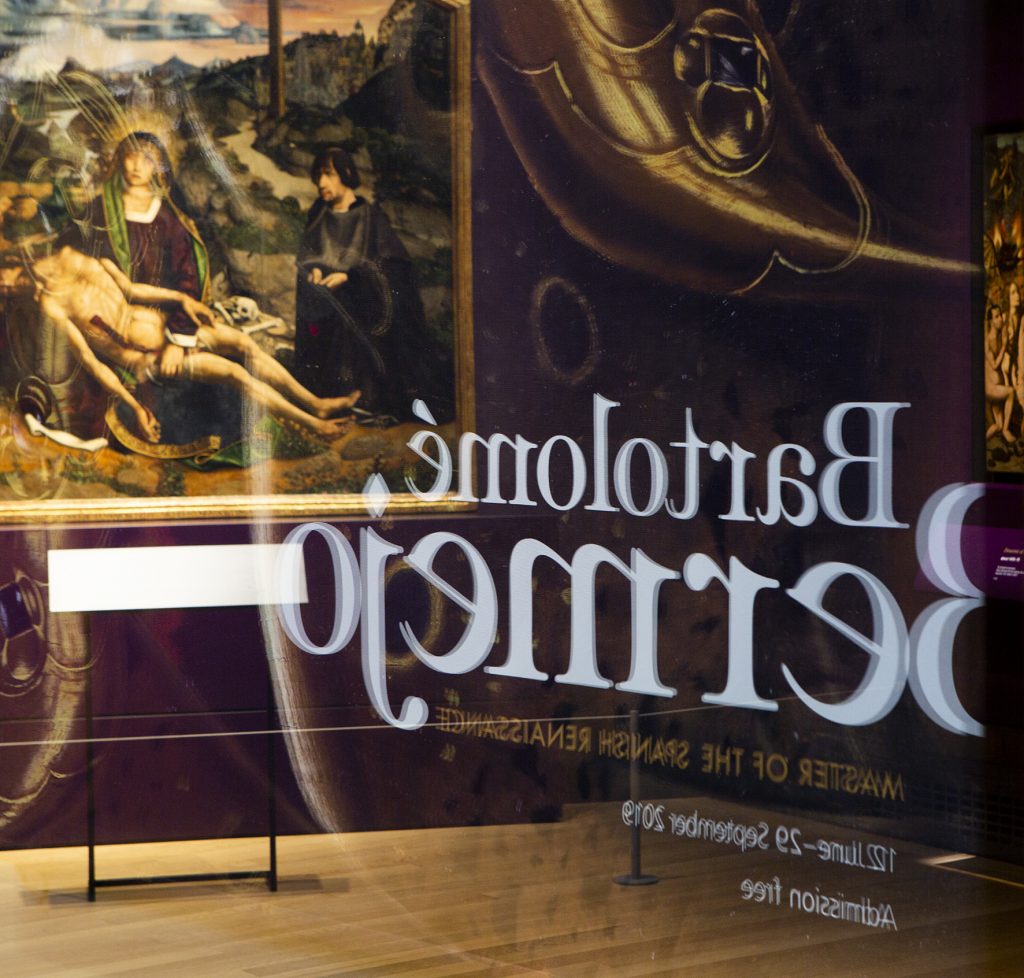
What projects have you worked on recently?
Since I started working at the National Gallery, I have worked on numerous exhibitions. My initiation rite was with one of the heavyweights of the Renaissance and his disciple: Michelangelo & Sebastiano. The truth is that I will never forget it. I entered when the exhibition was already half completed and I had to catch up with everything as fast as I could to not disappoint the expectations of my employers, and of course my own. This situation was a stressful, especially because I was not working in my mother tongue, but it was also immensely satisfying once it was finished.
During my 3 years at the National Gallery, I have designed approximately 14 exhibitions including 3 exhibits of Spanish monographs from a range of different time periods.
In 2017, at the centrepiece of the Self-portraits exhibition we had the Spanish baroque painter, Murillo. The central paintings were all on loan from the New York Frick collection which included and our famous self-portrait. It shows a more experienced Murillo with his hand outside the frame, building A magnificent trap.
At the beginning of 2019, we jumped from the Baroque to the Impressionism of the 19th century. During this time, I had the magnificent opportunity to design the Sorolla exhibition: Spanish Master of Light and collaborated closely with his great-granddaughter, Blanca Pons-Sorolla. I can also thank my very talented companion and friend, Akemi Herráez Vossbrink, curator of the exhibition together with Chris Riopelle for their help. On this occasion, the title of the exhibition gave me the key to the concept of design: The Light. Here the challenge was that of how to introduce the feeling of being in one of the beautiful landscapes of the impressionist painter. The concept was clear, the methods for obtaining it not so much. After several meetings with our lighting technicians, I envisioned the possibility of projecting Sorolla’s name on a large scale and introducing diffused light by means of gobos at the entrance to the exhibition space that simulated light passing through the leaves of the trees. I have to say that I experienced an almost childlike joy throughout the entire process of the Sorolla exhibition. In everything from the beginning of the creative concept to the design of the leaflets with translucent paper which made them so enticing that they sold out in 2 weeks rather than the predicted 2 months. The public reception was exceptional; the attendance expectations tripled and even today, when the exhibition closed several months ago, I am frequently met with members of the public who tell me that they were so moved by the painter that, even though he was unknown to them initially, now they will never forget him.
2019 also saw an even greater leap from Impressionism to the Gothic, Bartolomé Bermejo: Spanish Master of the Renaissance. This exhibition was a collaboration with the Prado Museum and the MNAC of Barcelona and was a great opportunity for me as a designer to bring Classic design into a more theatrical production. I incorporated the use of three-dimensional letters in gold, botanic elements which have a strong symbology in Bermejo as well as rhinestones (pearls and cabochons) to accentuate the jewellery elements frequently included in the production of the painter.
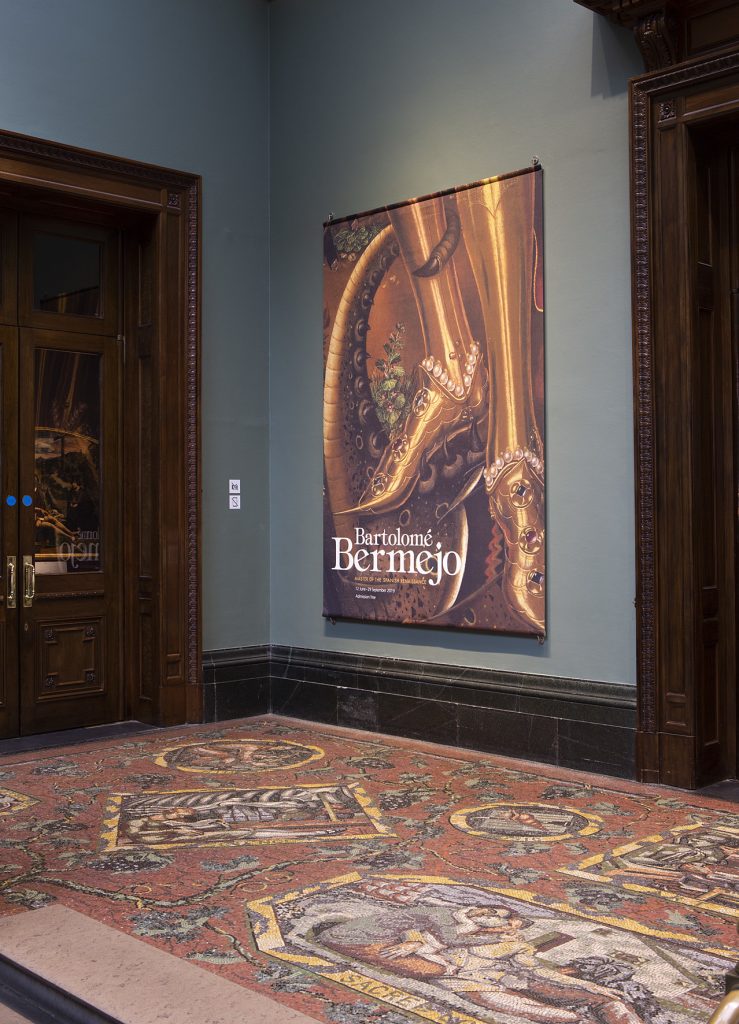
Who or what inspires you to do your work?
Inspiration comes when you least expect it. Sometimes walking through the forest, suddenly you see how the light hits the ground as it passes through the leaves and there you have it. Sometimes you stop to look at a shop window and there are those pearls that capture the light in a wonderful way, and you think, what if we put them next to Bermejo? They would look so beautiful. But most of the time it is a combination of observing your surroundings, absorbing inspiration (often from other exhibitions, photographs, theatre sets, ballet, opera and even passionate conversations with friends and colleagues) and looking in detail at the paintings included in the exhibition. The works themselves will always give you the keys to the consistency of the design. Sometimes there are slight artistic disparities between the visions of curators but the truth is, it is wonderful to work with the team of curators of the National Gallery. I feel that they love my work and this leads me to always want to do my best and go one step further whilst also helping and encouraging them.
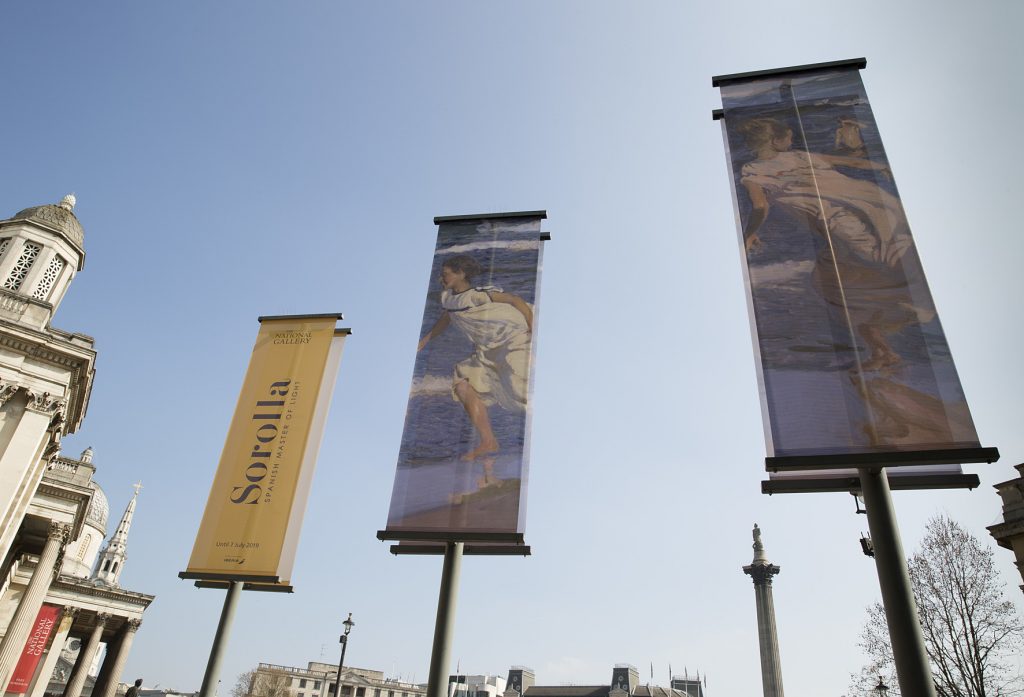
What places do you recommend in London as a designer?
I always like to visit other museums that inspire me and hold such knowledge. I usually like to go to the Design Museum, the Tate (in fact, since I have mentioned the theme of light, I highly recommend going to see Olafur Eliasson’s facilities) and the Victoria & Albert Museum. The Summer Exhibition at the Royal Academy is always very fun, I highly recommend it, in fact I have some projects programmed for next year. Clerkenwell Design Week is also always inspiring and varied and I recommend being aware of Central St Martins and Goldsmiths University’s exhibitions. I always enjoy being inspired by bookstores and even seeing the designs of artists in showcases of luxury stores (especially at Christmas), which are abound here in London: those of New Bond Street are particularly beautiful.
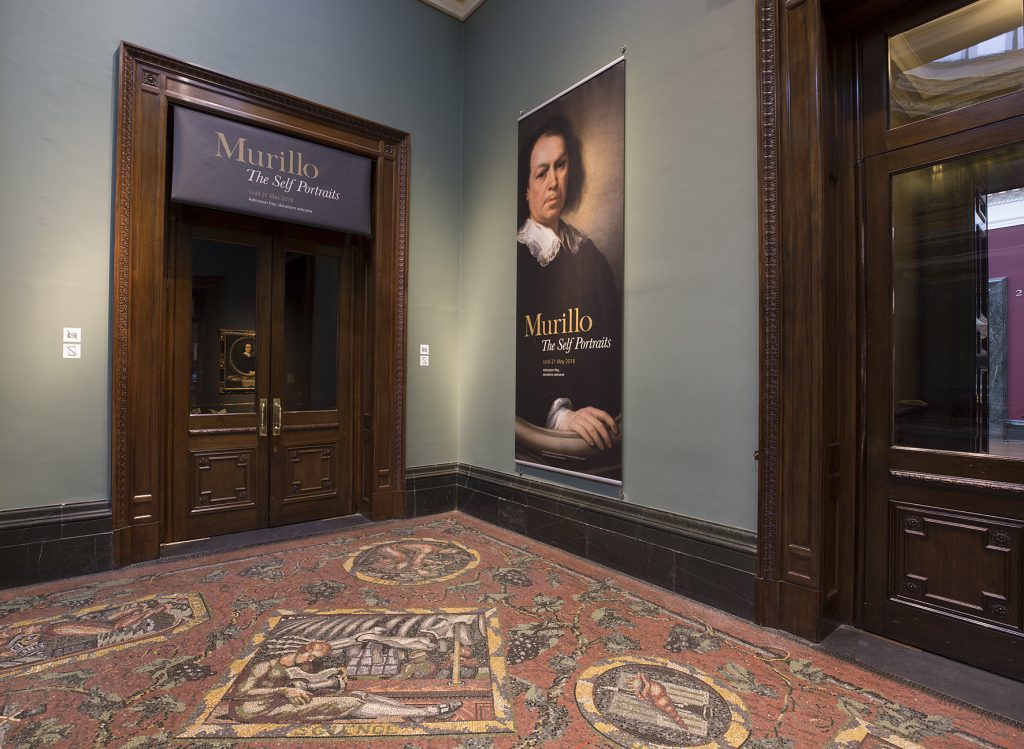
What projects are you working on at the moment?
At this moment, I just opened Leonardo: An Immersive Experience, in which I have been in charge of creating the Blue Angel (which we are using for the marketing campaign and the cover of the catalogue). It is a mixture of layers upon layers in Photoshop with different opacities and fusion modes, combining Leonardo’s work with microscopic pigments of the painting. It has been the most interesting and enriching collaboration alongside my partner in the scientific department, Marika Spring. It is then followed by Nicolaes Maes: Dutch Master of the Golden Age, in the same space as Leonardo in February 2020. At the moment I am immersed in the creative concept of the next exhibition in room 1, SIN. It promises everything and more and it will be a fantastic effort to bring religious themes into an increasingly secular society in an engaging and relevant way.
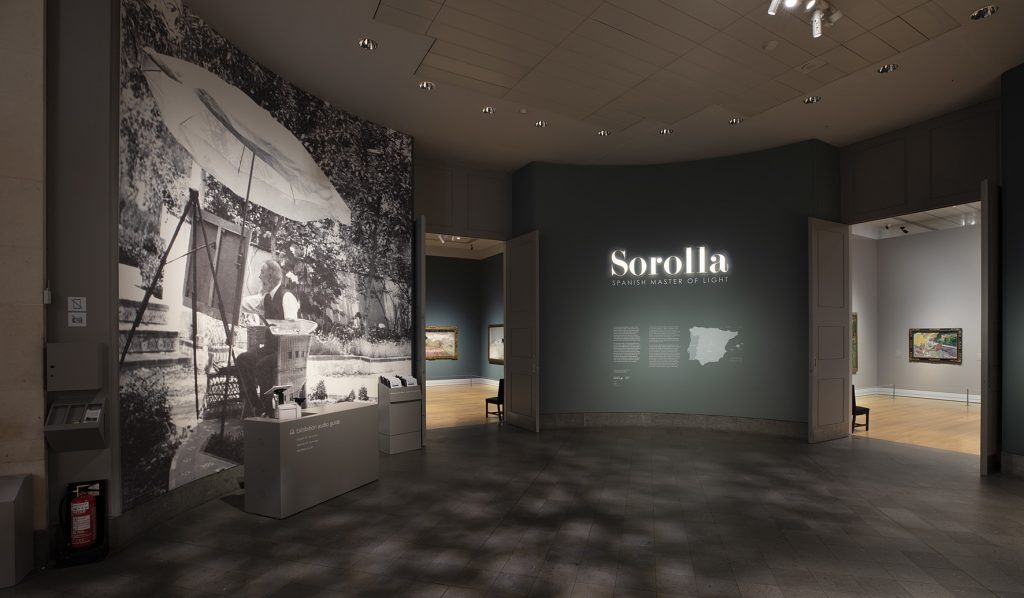
Belen Cao, la diseñadora española en las exposiciones de la National Gallery

Belen Cao es licenciada en Periodismo y Comunicación Audiovisual por la Universidad Antonio de Nebrija de Madrid (2009). Siempre le han interesado mucho tanto la escritura como el dibujo por esta razón, mientras trabajaba en gabinetes de prensa pequeños, empezó a redirigir su carrera hacia el Diseño Gráfico.
En 2012, Cao completó un máster profesional en esta materia de un año en la escuela Trazos de Madrid. Seguido de un año en Ilustración Digital en la escuela ESDIP de Madrid (2014) y finalmente, un Master of the Arts en la Universidad Kignston de Londres en Diseño Gráfico y Comunicación Visual en el que se licenció con honores en 2016. Siempre intercalando periodos de no estudio con cursos breves de animación, dibujo, tipografía y métodos de impresión.
Cao comenzó su trayectoria en la National Gallery de Londres en diciembre de 2016 tras un breve periodo de voluntariado como profesora de arte en un colegio de primaria del sureste de Londres que compaginaba con un trabajo como diseñadora freelance para Associated Studios, una escuela de formación para jóvenes estudiantes de Teatro y Ópera.

¿En qué proyectos has trabajado recientemente?
Desde que empecé a trabajar en la National Gallery, he trabajado en numerosas exposiciones. Mi rito de iniciación fue con uno de los pesos pesados del Renacimiento y su discípulo: Michelangelo & Sebastiano. La verdad es que nunca lo olvidaré porque entré cuando la exposición estaba ya a medio construir y me tuve que poner al día con todo tan rápido como pude para no defraudar las expectativas de mis empleadores, y por supuesto las mías propias. Esta situación fue un poco estresante, –sobre todo porque no estaba trabajando en mi lengua materna– aunque también una gran satisfacción cuando estuvo terminada.
Si no recuerdo mal, durante estos tres años, he diseñado 14 exposiciones, tres de ellas monográficas de artistas españoles de muy diversos periodos.
Del barroco español fue en 2017 la exposición Murillo: The Selfportraits, que tuvo como figuras centrales el Autorretrato de la Frick collection de Nueva York y nuestro famoso autorretrato en el que, un Murillo ya más experimentado, se retrata con la mano fuera del marco construyendo un magnífico trampantojo.
A principios de 2019, saltamos del Barroco al Impresionismo del siglo XIX, cuando tuve la magnífica oportunidad de diseñar Sorolla: Spanish Master of Light y colaborar estrechamente con la bisnieta del pintor Blanca Pons-Sorolla y con mi muy talentosa compañera y amiga, Akemi Herráez Vossbrink, comisaria de la exposición junto con Chris Riopelle. En esta ocasión el mismo título de la exposición me dio la clave para el concepto del diseño: La Luz. Aquí el reto fue, cómo introducir la sensación de estar en uno de los bellísimos paisajes del pintor impresionista en un piso menos 2 en las profundidades de la National Gallery. El concepto estaba claro, los métodos para consegurilo no tanto. Tras varias reuniones con nuestros técnicos de iluminación vislumbré la posibilidad de proyectar el nombre de Sorolla a gran escala e introducir luz difusa mediante gobos en la entrada al espacio expositivo que simulaba luz pasando a través de las hojas de los árboles. Tengo que decir que disfruté como una niña durante toda la elaboración de Sorolla, desde los principios del concepto creativo hasta el diseño de folletos con papel traslúcido que realicé para repartir en la galería (debían haber durado 2 meses y se agotaron en 2 semanas). La acogida del público fue excepcional, creo recordar que se triplicaron expectativas de asistencia y aun hoy, cuando la exposición cerró hace ya varios meses, los vigilantes de la galería cuando me ven pasar me cometan con añoranza cuánto les emocionó la obra de un pintor del que ni siquiera antes habían oído hablar pero que ahora ya no olvidarán.
En el mismo 2019, un salto aun mayor desde el Impresionismo al Gótico, Bartolomé Bermejo: Spanish Master of the Renaissance, que hemos realizado junto con el Museo del Prado y el MNAC de Barcelona ha sido una estupenda oportunidad para mí como diseñadora de acercar el diseño clásico a una producción más teatral al haber podido incluir el uso de letras tridimensionales en color oro, elementos de botánica con una fuerte simbología en los cuadros de Bermejo y pedrería (perlas y cabuchones) como guiño a elementos de joyería frecuentemente incluidos en la producción del pintor.

¿En quién o qué te inspiras para hacer tus trabajos?
La inspiración llega cuando uno menos lo espera. A veces paseando por el bosque de repente ves como la luz incide en el suelo al pasar por las hojas y ya lo tienes. A veces te detienes a mirar un escaparate y ahí están esas perlas que capturan la luz de una forma maravillosa, y piensas, ¿y si las ponemos junto a Bermejo?, ¿Se verían tan hermosas. Pero la mayoría de las veces consiste en una combinación entre observar lo que te rodea, absorber la inspiración (muchas veces procedente de otras exposiciones, fotografías, decorados de teatro, ballet, ópera e incluso conversaciones apasionadas con amigos y compañeros) y mirar con detalle las pinturas incluidas en la exposición: ellas te dan las claves para hacer un diseño congruente con los cuadros e incluso a veces ir un paso más allá si te lo permiten los comisarios –normalmente ambas partes deben hacer concesiones–. Pero lo cierto es que es una maravilla trabajar con el equipo de comisarios de la National Gallery. Siento que les encanta mi trabajo y ello me lleva a querer siempre dar lo mejor e ir un paso más allá.

¿Qué lugares recomiendas en Londres como diseñadora?
Siempre me gusta visitar otros museos que me inspiren y aporten conocimientos. Normalmente me gusta mucho ir al Design Museum, al Tate (de hecho, ya que he mencionado el tema de la luz, recomiendo muchísimo ir a ver las instalaciones de Olafur Eliasson) y al Victoria & Albert. La Summer Exhibition de la Royal Academy es siempre muy divertida, la recomiendo muchísimo, de hecho tengo unos proyectos preparados para presentar el año que viene. Clerkenwell Design Week es siempre inspiradora y variopinta. También recomiendo estar al tanto de lo que hacen Central St Martins y Goldsmiths university.
Siempre disfruto inspirándome en librerías e incluso viendo los diseños de artistas en escaparates de tiendas de lujo (sobre todo en Navidad), que aquí en Londres abundan, por ejemplo son muy bonitas las de New Bond Street.

¿En qué proyecto estás trabajando ahora?
Hace poco abrió Leonardo: An Immersive Experience, en la que me he encargado de crear el Ángel Azul (que estamos usando para la campaña de marketing y la portada del catálogo) producto de una mezcla de capas y capas en Photoshop con diferentes opacidades y modos de fusión, combinando la obra de Leonardo con pigmentos microscópicos del cuadro. Una colaboración de los más interesante y enriquecedora pertrechada junto con mi compañera del departamento científico Marika Spring. Le sigue Nicolaes Maes: Dutch Master of the Golden Age, en el mismo espacio que Leonardo en febrero de 2020.
En estos momentos me encuentro inmersa en el concepto creativo de la próxima exposición en room 1, SIN. Promete todo y más y será un fantástico esfuerzo para acercar la temática religiosa de una forma interesante a una sociedad cada día más laica.

